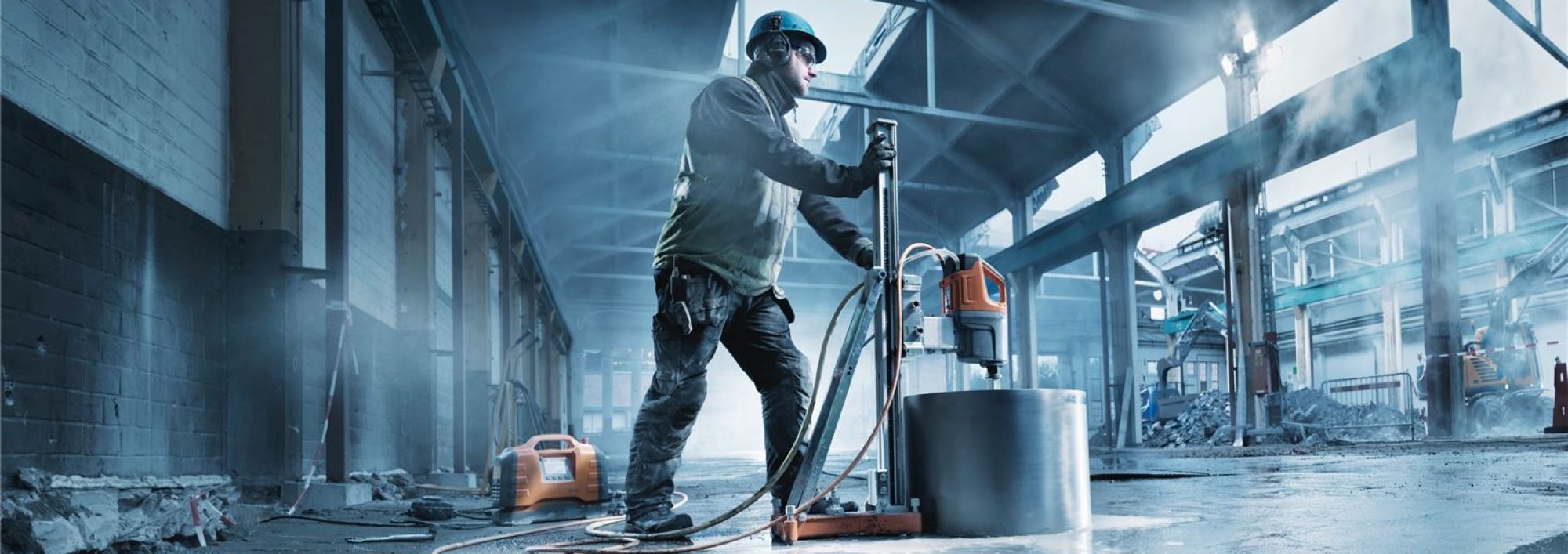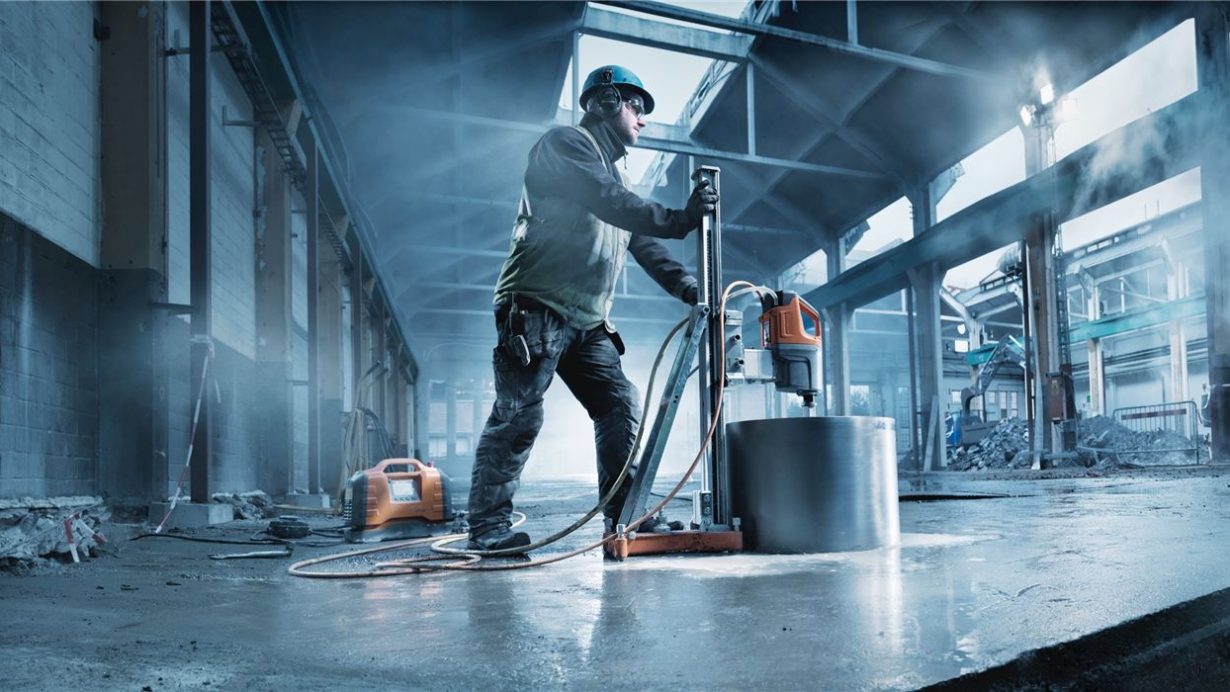Many home improvement projects can require you to fasten things like shelf brackets into a concrete wall. You will find concrete walls in basements or you may even need to fasten something down onto a concrete floor.
Core Drilling into concrete is difficult because the embedded aggregate in concrete makes it dense and hard, and these stones are obstacles to any drill bit. Drilling into concrete can quickly make the drill bits dull and require them to be replaced or sharpened. Concrete drilling becomes easier if you use a hammer drill, that hammers while it rotates, and this hammering action helps to pulverize the aggregate in the concrete, allowing the rotary action to create the desired holes in the concrete. The available hammer drills can also be cordless but are highly demanding of power. You can also get hammer drills in which the mode can be changed into rotational only so that you can drill into other surfaces like brick or plaster and lath.

You can always use only rotary drills for drilling into concrete but this can take longer and require greater physical effort. The rotation of the drill bit in concrete produces a lot of heat, and this can harm the drill bit, and lead to its breaking at times. Running a stream of water onto the surface being drilled can cool down the drill bit, prevent it from breaking, and also make it easier to drill the hole. Removing the debris constantly with a vacuum can also prevent the debris formed during drilling from obstructing the drilling.
Start your project for drilling holes in concrete by clearly marking its location, and also be sure that there is nothing concealed in the concrete that can get damaged during the drilling. Concrete walls will have embedded power conduits, water lines, and the inevitable reinforcement bars. Decide on the diameter of the required hole and the depth to which it requires to be drilled. Most drills will have depth stops that must be set to a quarter of an inch more than the required depth. The purchase of concrete screws will often also include the right size of the drill bit that must be used.
Start the drilling of the hole by first creating a guide hole of at least a quarter of an inch. Do this while setting the drill to a low speed, as this will give you better control. Stop drilling and remove all dust and debris from the guide hole. You can now start the drilling making sure that the drill is perpendicular to the surface being drilled. Hold the drill firmly without applying too much pressure and run it at a medium speed. Periodically, stop drilling and clear the concrete dust that has formed with the drilling and hammering action. Continue these intermittent operations till the required depth of the hole has been reached.
Concrete drilling can produce dust and noise and you need to provide yourself with goggles, gloves, and ear muffs if necessary so that any drilling operations can be carried out safely. Visit: www.familyhandyman.com for more on drilling concrete and installing fasteners.
Article Contributed by: Concrete Cutting Perth

